Migraines: Symptoms, Causes & Treatment
Austin Chiropractor Dr. Daniel has extensive experience and success with Migraine Headaches
Migraine Headaches
Migraine headaches are responsible for throbbing pain and pulsing sensations that are usually only felt on one side of the head. People with migraine attacks will also experience nausea, vomiting, and extreme sensitivity to light and sound. Migraine attacks can cause significant pain and visual disturbances that last for 72 hours to days and can be so severe that the pain is disabling.
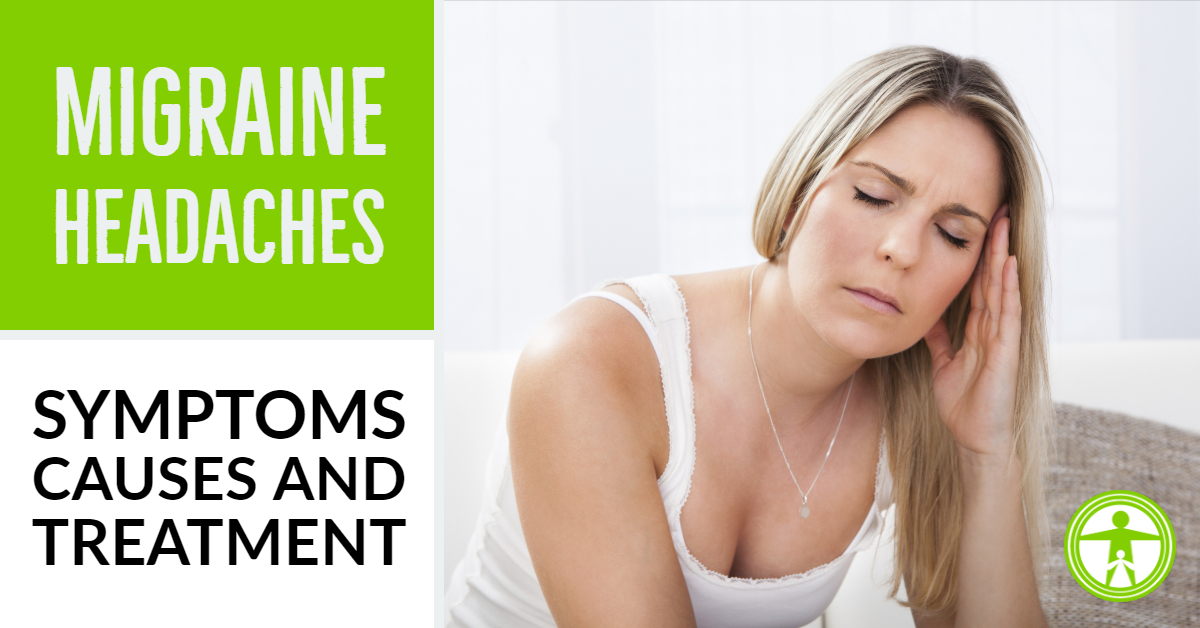
About 12 percent of Americans get migraines. They can affect anyone, but you are more likely to have them if you:
- You're Female. Women are 3X's more likely than men to get migraines.
- Have a Family History of Migraine Headaches. It's common to find that other family members suffer from migraines.
- Have a medical condition, such as depression, anxiety, bipolar disorder, sleep disorders, and epilepsy.
Migraine Symptoms
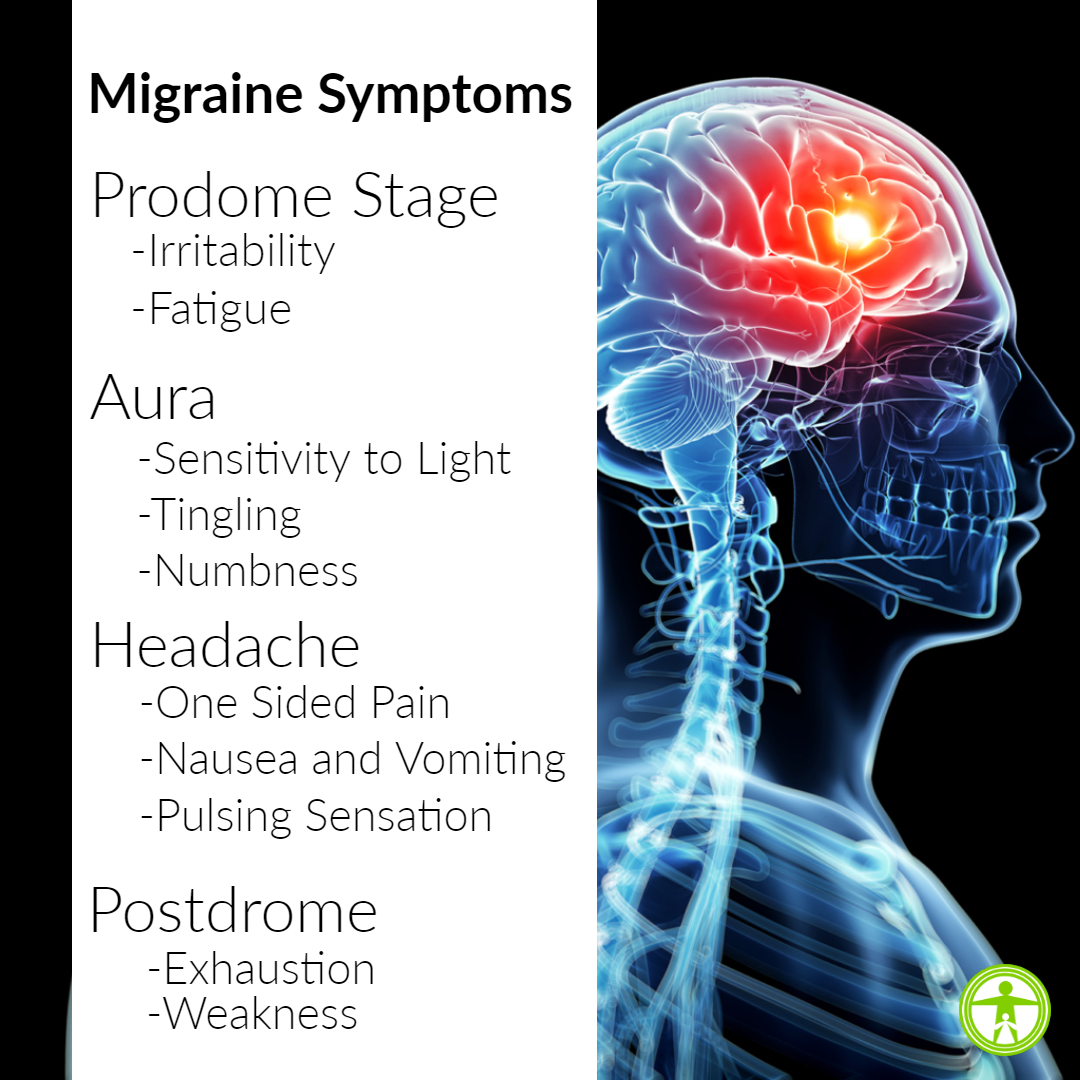
- Prodome. This phase actually starts prior to the migraine attack. Early signs of prodome can include food cravings, unexplained mood changes, uncontrollable yawning, fluid retention, and increased urination.
- Aura. In this phase, you might see flashing or bright lights. People also experience muscle weakness and fatigue. An aura can happen just before or during a migraine and yet people can have migraines without aura.
- Headache. A migraine usually starts gradually and then becomes more severe. It typically causes throbbing or pulsing pain, which is often on one side of the head. But sometimes you can have a migraine without a headache. Other migraine symptoms may include
- Increased sensitivity to light, noise, and odors
- Nausea and vomiting
- Worsened pain when you move, cough, or sneeze
- Postdrome (following the migraine headache). You may feel exhausted, weak, and confused after a migraine. This can last up to a day.
What Causes Migraines?
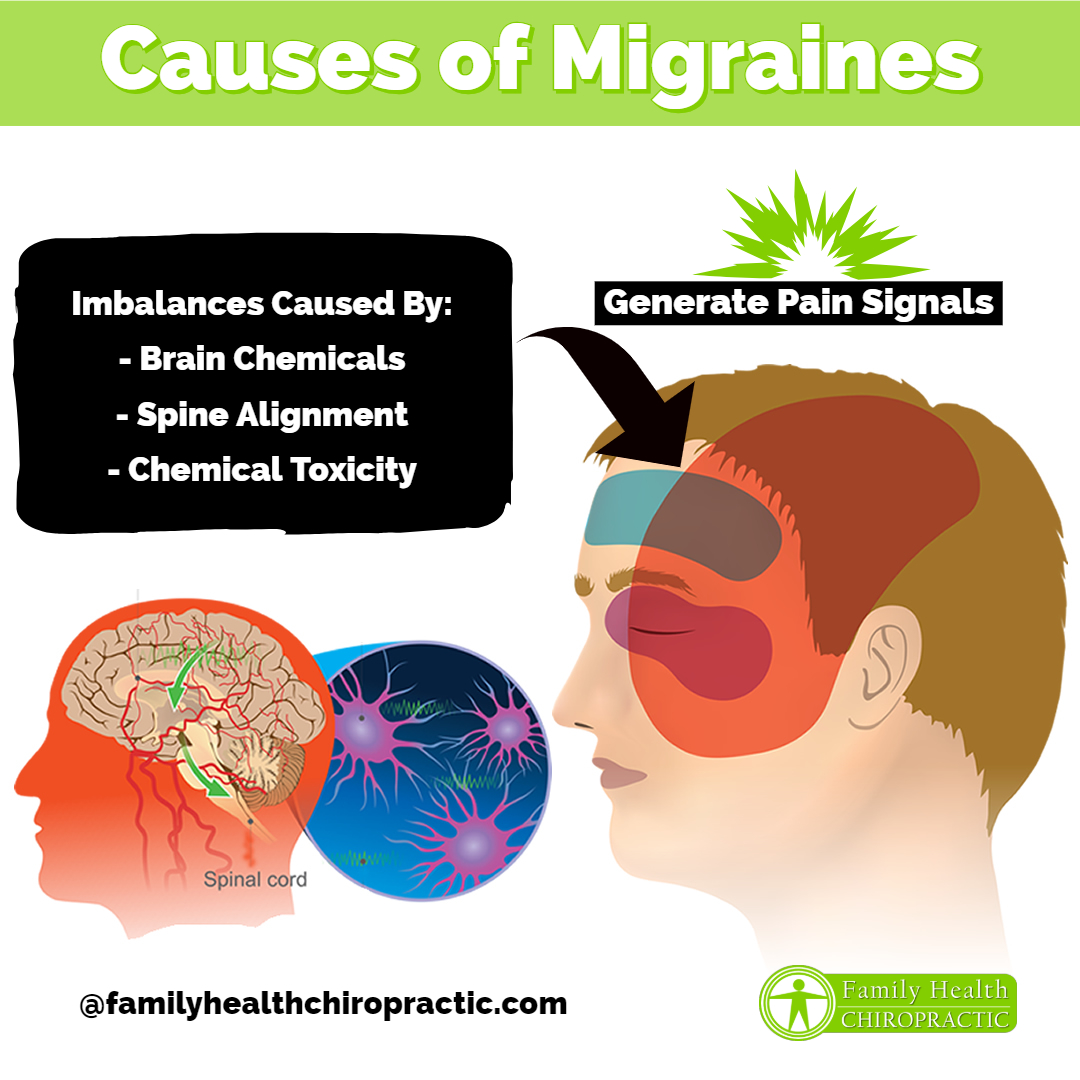
Most healthcare professionals including Austin Chiropractor Dr. Daniel, believe that genetics, environmental triggers and dysfunction of the tissues surrounding the head and neck play a major role.
Beginning with the brain, there are dozens of nerves that travel through the brainstem, along the face and neck muscles, that also include major pain pathways.
Imbalances in brain chemistry such as serotonin, dopamine, gaba and glutamate are also thought to be involved in the development of migraine attacks.
Serotonin levels are known to drop during migraine attacks.
This may cause the trigeminal nerve (a nerve traveling through the face) to release substances called neuropeptides, which travel to the brain's outer covering (meninges). The result is migraine pain.
Known Migraine Triggers
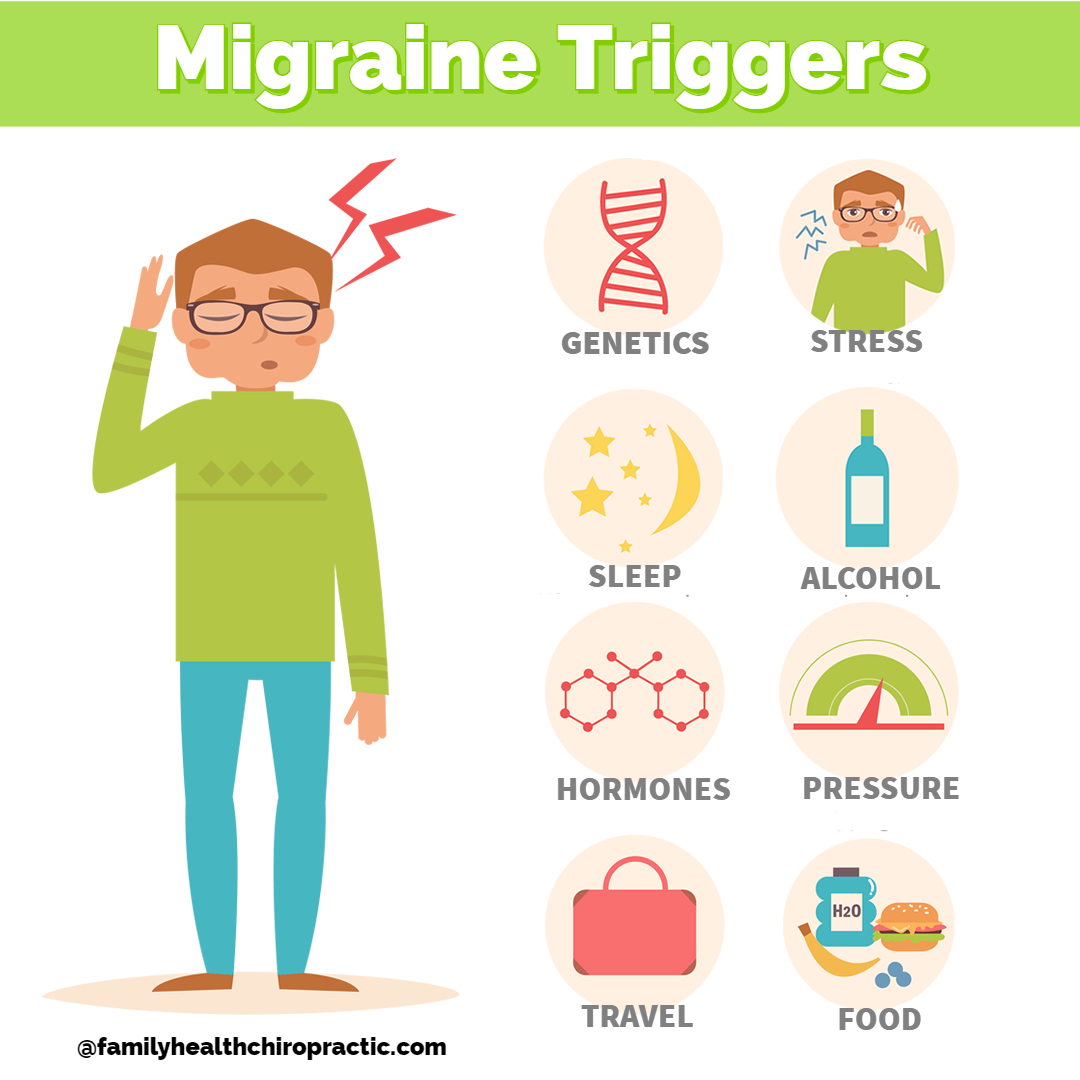
- Hormonal Imbalances in Women. Fluctuations in estrogen can trigger headaches in many women. Women with a history of migraines often report headaches immediately before or during their periods, when they have a major drop in estrogen. In addition, it's well known that women will experience more migraines during pregnancy and menopause.
- Foods. Foods that contain large amounts of nitrites/nitrates and histamine such as cheese, deli meats and processed foods can trigger migraines. Skipping meals or fasting can also trigger attacks.
- Food additives. The sweetener aspartame and the preservative monosodium glutamate (MSG), found in many foods, may trigger migraines.
- Drinks. Alcohol, especially wine, and highly caffeinated beverages may trigger migraines.
- Stress. Stress at work or home can cause migraines.
- Sensory stimuli. Bright lights and sun glare can induce migraines, as can loud sounds. Strong smells — including perfume, paint thinner, secondhand smoke and others — can trigger migraines in some people.
- Changes in wake-sleep pattern. Missing sleep or getting too much sleep may trigger migraines in some people, as can jet lag.
- Physical factors. Intense physical exertion, including sexual activity, may provoke migraines.
- Changes in the environment. A change of weather or barometric pressure can prompt a migraine.
- Medications. Oral contraceptives and vasodilators, such as nitroglycerin, can aggravate migraines.
Migraine Diagnosis
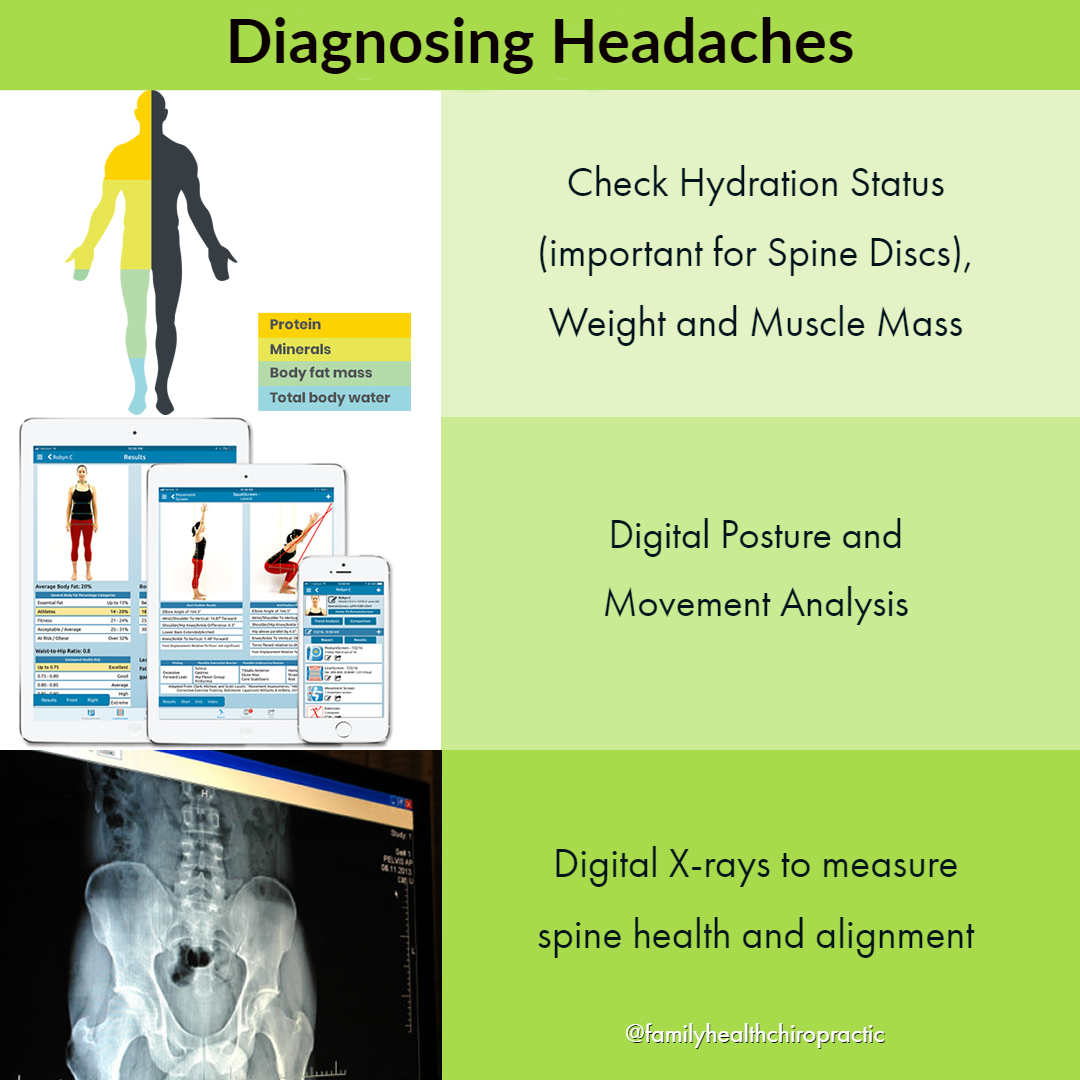
Austin Chiropractor Dr. Daniel, likes to start his headache assessments by asking about the symptoms you're experiencing. how often they happen and for how long they've been happening.
While most people do not need special testing, our Austin chiropractic clinic will perform:
- Body Composition (body fat, muscle mass hydration status, height and weight)
- Digital Posture Analysis
- Muscle Strength and Reflex Testing
- Digital X-ray
All of these tests are appropriate in helping to diagnose headaches.
If our evaluation does not help to determine the cause of headaches, additional tests such as MRI's or EEGs (brain scans) can be ordered.
Migraine Treatment
There is no cure for migraine headaches. Treatment is largely focused on relieving symptoms and preventing additional attacks.
There are different types of medicines to relieve symptoms. These include triptan drugs, ergotamine drugs, and pain relievers.
There are also other things you can do to feel better:
- Resting your eyes
- Taking a cold or hot shower
- Staying hydrated
- Getting Chiropractic Adjustments
If you want to naturally treat migraine headaches, you should consider several options.
There are also lifestyle changes you can make to prevent migraines:
- Stress management strategies, such as exercise, relaxation techniques, and biofeedback, may reduce the number and severity of migraines. Biofeedback uses electronic devices to teach you to control certain body functions, such as your heartbeat, blood pressure, and muscle tension.
- Make a log of what seems to trigger your migraines. You can learn what you need to avoid, such as certain foods and medicines. It also help you figure out what you should do, such as establishing a consistent sleep schedule and eating regular meals.
- Hormone therapy may help some women whose migraines seem to be linked to their menstrual cycle
Certain natural treatments, such as riboflavin (vitamin B2) and coenzyme Q10, may help prevent migraines. If your magnesium level is low, you can try taking magnesium. There is also an herb, butterbur, which some people take to prevent migraines. But butterbur may not be safe for long-term use. Always check with your health care provider before taking any supplements.
Our Austin chiropractor is trained in Functional Medicine and uses blood chemistry, vitamin and nutrient testing and food sensitivity testing to determine the true causes of headaches and the best headache treatment.
Migraine Treatment In Austin
If you live in the Austin area and are suffering from migraine headaches, suffer no more!
Here at Family Health Chiropractic, treatment of headaches is only the beginning of how we can help you live a happy, healthier life.
Click here to sign up for a consultation with Austin’s Best Chiropractor today!


